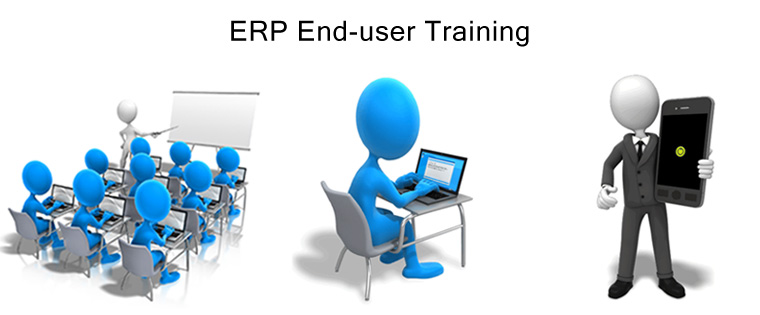Blended Learning: Leverage Multiple Learning Environments
The best learning takes place when a blend of two or more environments are used to conduct training. Here’s why and how you can do it.

Every year, the eLearning industry sees a rise in the number of organizations moving from traditional to online learning. The eLearning industry is without a doubt, growing and set to reach an approximate revenue of USD $31 billion, by the end of 2020. The benefits of an online training program far outweigh a traditional training program; but even we in the eLearning fraternity, would not recommend deploying online learning alone. The reason, in a nutshell, is this: Every learning environment – be it online or traditional, provides benefits that cannot be supplemented by another, but is also afflicted by limitations that can be overcome by another. We therefore recommend that organizations implement a blended learning format that makes use of multiple learning environments.
The Environments of a Blended Learning Format
A learning program is said to be a blended format when:
- It is made up of multiple (two or more) learning environments
- One of the environments is online
The environments that are typically used are:
- Online Learning
- Offline Learning (via mLearning)
- Traditional methods of training such as classroom training or Instructor Led Training (ILT)
Each of these environments can and has been used as standalone methods; but their strengths and limitations hinder successful learning. Here’s a quick look at some of their prominent strengths and limitations.
Traditional Environment (Classroom) – The Benefits
- We have grown up with, and therefore are familiar with this form of learning
- Makes social learning possible, through group discussions, team-building assignments, etc.
- The presence of an instructor helps address queries
- Face-to-face training lends a human touch to learning
- Learners can clear their doubts, immediately
Traditional Environment (Classroom) – The Limitations
- Expensive – incur costs from travel, trainers, accommodation, infrastructure, training space, other resources
- High dependency on trainers who may not always be available
- Employees may not always be available for training
- Time consuming
- Extended periods of training could lead to less productivity
- Delays are unavoidable when training must be conducted across locations
- The success of a training program largely lies on the experience and proficiency of the trainer
- Some types of hands-on training that involve the use of chemicals and machinery could lead to accidents, injuries, and fatalities
- Usually a one-time affair and therefore retention of knowledge is very low
Online Environment – The Benefits
- Cheaper than traditional methods as there are no costs incurred from travel, hiring trainers, accommodation, and infrastructure
- No requirement of trainers
- Training can be taken up anywhere, if there is Internet connectivity
- Training can be taken up anytime – and does not have to be completed in one sitting
- Does not take employees away from work, so productivity is maintained
- Can be created and updated quickly
- Can be used to conduct uniform training across geographies
- A safe environment to learn
Online Environment – The Limitations
- Learners could feel isolated when adhering only to online programs
- No immediate access to a trainer to clear doubts
- Training could seem impersonal if not created by a reliable eLearning vendor
- Cannot be accessed if there is no Internet connectivity
- Employees must have basic computer literacy
MLearning – The Benefits
- Accessible anywhere and anytime – even from remote locations or while traveling
- Accessible offline as well as online
- Accessible on multiple devices (even personal devices that they are comfortable and familiar)
- Can be used for reinforcement training, so there is greater quality and quantity of retained information
- Can be used for performance support, so there is increased productivity
MLearning – The Limitations
- No immediate access to a trainer to clear doubts
- Could be very impersonal if not created by a reliable eLearning vendor
- Learners could feel isolated if they prefer classroom/traditional training methods
- Difficult to use if the learner’s device is very small
Notice how the benefits and limitations of one environment make up the limitations and benefits of others? It is for this very reason that a blended format works out well for almost any type of training.
Blended Format – The Benefits of Combining Two or More Environments
A blended format can begin with an online test to gauge the amount of knowledge before training, followed by classroom training, and then refresher courses based on the knowledge passed on during classroom training.
Extended Reach
- Reach employees across all locations through mLearning and/or online learning
- No need to depend on trainers. Subject matter experts can conduct face-to-face training sessions or asynchronous sessions via webinars
Uniform Training
- Conduct uniform training across locations and geographies
- Conduct training at the same time across locations and geographies
Cost-Effective
- Training that otherwise requires travel, infrastructure, accommodation, and other resources can be converted to eLearning or mLearning
- Hard copies, PDFs, and PPTs of course material can be converted to online formats at reasonable costs
Something for Everyone
- Targets learners who prefer traditional methods as well as methods that make use of modern technology
- Targets kinesthetic, audio, as well as visual learners
- Benefits learners who are unavailable for classroom training, as well as those who are available for classroom training, but would like reinforcement training as well
Personalized Learning
- A seamless blend of interactions when moving from classroom to online, or vice versa. For example, online training and discussions can be followed by a classroom session where discussions can be taken forward with the instructor.
- Content can be personalized to meet the requirements of individuals and/or geographies (through translations, localization, and internationalization)
Flexible
- Use in any ratio (e.g., online pretraining, classroom training, and refresher courses via mLearning, or pretraining in the classroom and online learning)
- Use in any combination (e.g., eLearning + classroom training, or classroom training + mLearning)
- Use in any order (e.g., start with eLearning and move to classroom training, or start with classroom training, follow up with eLearning and mLearning)
Efficient Use of Time
- Can be used to conduct training online, which is then followed up with a classroom session that is dedicated to clearing learners’ doubts – making classroom training more meaningful
- Does not take learners away from their daily work
Are There Disadvantages to a Blended Format?
Someone once said, “Sometimes the best way to learn is to go beyond limits and set your own rules.” While I’m sure that this was thought of in an entirely different context, I would like to believe that it can be applied for blended learning as well; after all, blended learning does push the limitations of standalone environments and allows organizations to set their own rules for when and how it is implemented. In other words, there is no disadvantage when you get it right.





